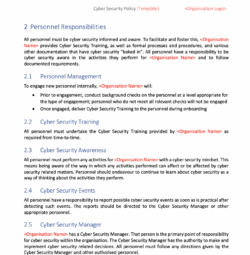So, something went wrong. It happens to the best of us, right? Whether it’s a system outage, a failed product launch, or even a process breakdown within your team, the important thing isn’t just fixing the immediate problem, it’s learning from it. And the best way to learn is through a thorough post mortem analysis. But staring at a blank document can be daunting. Where do you even begin? That’s where a post mortem documentation template comes in handy. It gives you a structured framework to capture all the crucial details and insights from the incident.
Think of a post mortem documentation template as your guide through the incident landscape. It helps you gather information about what happened, when it happened, who was involved, and most importantly, *why* it happened. It’s about uncovering the root causes, not just patching the symptoms. A good template will prompt you to consider everything from technical glitches to communication breakdowns, ensuring a holistic view of the situation.
Ultimately, the goal is to transform a negative experience into a valuable learning opportunity. With a well-documented post mortem, you can identify patterns, implement preventative measures, and improve your team’s overall resilience. It’s about fostering a culture of continuous improvement, where mistakes are seen not as failures, but as stepping stones to success. So, let’s dive in and explore how a structured template can help you achieve just that.
Why Use a Post Mortem Documentation Template?
Let’s face it, after a stressful incident, everyone’s eager to move on. The pressure to fix things quickly can sometimes lead to skipping essential steps like documenting what went wrong. But rushing past the “why” is a huge missed opportunity. A post mortem documentation template provides a structured approach that ensures a comprehensive analysis. It prevents you from overlooking crucial details that might otherwise be forgotten or glossed over in the heat of the moment. This structured approach, in turn, leads to more effective solutions and better prevention strategies.
Imagine trying to rebuild a car engine without a blueprint. You might get it running eventually, but you’ll likely make mistakes and miss key components. A template serves as that blueprint for your post mortem analysis. It guides you through the process, prompting you to consider all relevant aspects of the incident. From timeline reconstruction to impact assessment, the template ensures nothing falls through the cracks.
Another key benefit is improved communication. A well-structured post mortem document serves as a single source of truth for everyone involved. It allows different teams and individuals to understand the incident from the same perspective, fostering collaboration and preventing misunderstandings. This is particularly important in large organizations where different departments might have different views on what happened and why.
Furthermore, a post mortem documentation template promotes accountability without assigning blame. The focus is on understanding the system’s weaknesses and identifying areas for improvement, rather than pointing fingers. This creates a safe environment for open and honest discussion, encouraging team members to share their insights and perspectives without fear of retribution. This blameless culture is essential for fostering innovation and continuous learning.
Finally, having a library of post mortem documents creates a valuable historical record. This allows you to track trends, identify recurring problems, and measure the effectiveness of your preventative measures. Over time, this data can be used to build a more resilient and reliable system, reducing the likelihood of future incidents.
Key Elements of an Effective Post Mortem Documentation Template
A great post mortem documentation template isn’t just a checklist; it’s a framework designed to extract maximum learning from every incident. There are several key elements that contribute to its effectiveness. The first, and arguably most important, is a detailed timeline. This should meticulously reconstruct the events leading up to the incident, the incident itself, and the subsequent recovery efforts. Include timestamps, actions taken, and any relevant observations.
Next, clearly define the impact of the incident. Who was affected? What systems were impacted? How long did the incident last? Quantify the impact as much as possible, using metrics like revenue loss, customer complaints, or system downtime. This helps to understand the true cost of the incident and prioritize future mitigation efforts.
A crucial section is dedicated to root cause analysis. This goes beyond identifying the immediate trigger of the incident and delves into the underlying factors that allowed it to happen. Use techniques like the “5 Whys” to drill down to the core issues. Were there design flaws? Inadequate testing? Insufficient monitoring? Documenting these root causes is essential for preventing similar incidents in the future.
The template should also include a section for action items. These are specific, measurable, achievable, relevant, and time-bound (SMART) steps that will be taken to address the identified root causes. Assign ownership for each action item and set a clear deadline. Regularly track the progress of these action items to ensure they are completed in a timely manner.
Finally, a good post mortem documentation template should include a section for lessons learned. This is where you capture the key takeaways from the incident. What did you learn about your systems, processes, or team dynamics? What changes can you make to prevent similar incidents in the future? Share these lessons learned with the wider organization to promote a culture of continuous improvement.
By carefully examining these situations, teams gain valuable insights into their systems, processes, and communication channels. This process not only helps in preventing similar incidents in the future but also fosters a culture of continuous improvement and learning within the organization.
Ultimately, the goal is to turn mistakes into opportunities for growth. When approached with a spirit of curiosity and a commitment to learning, these experiences can become the most valuable assets in a team’s arsenal.

